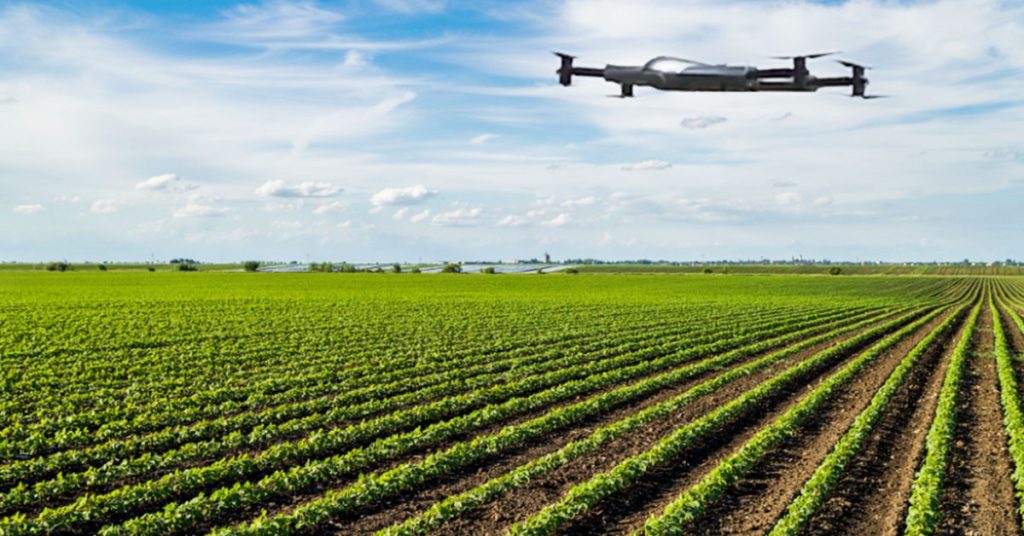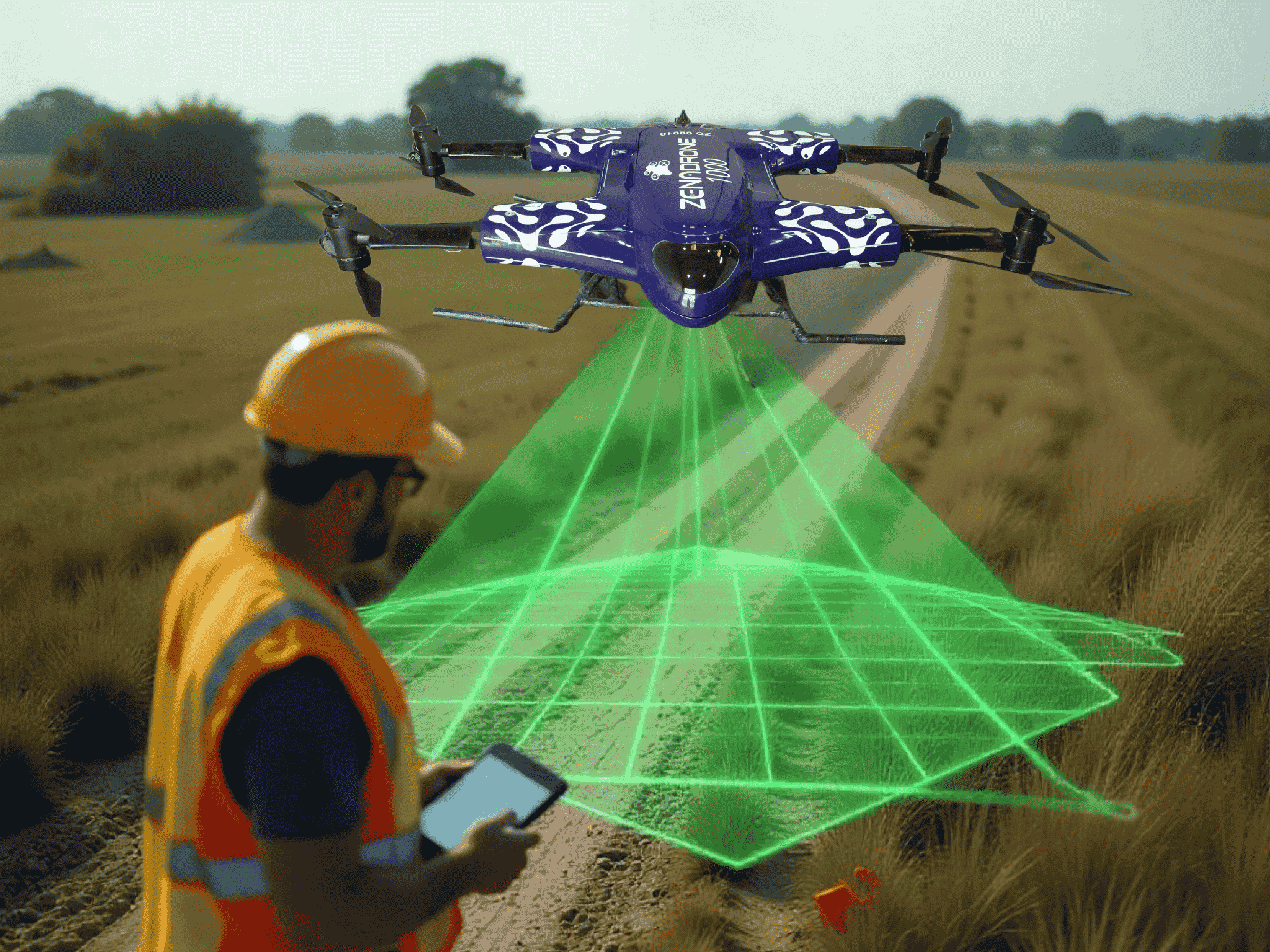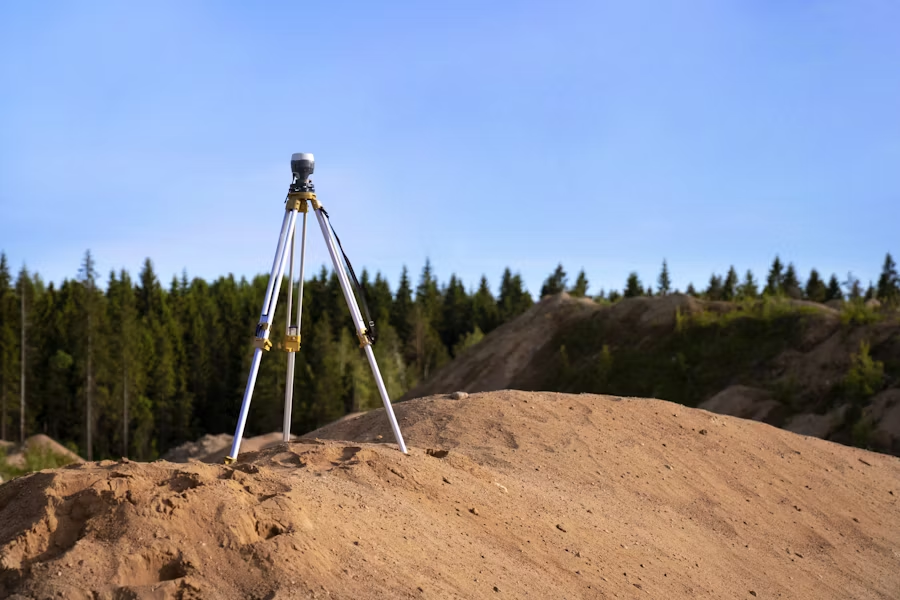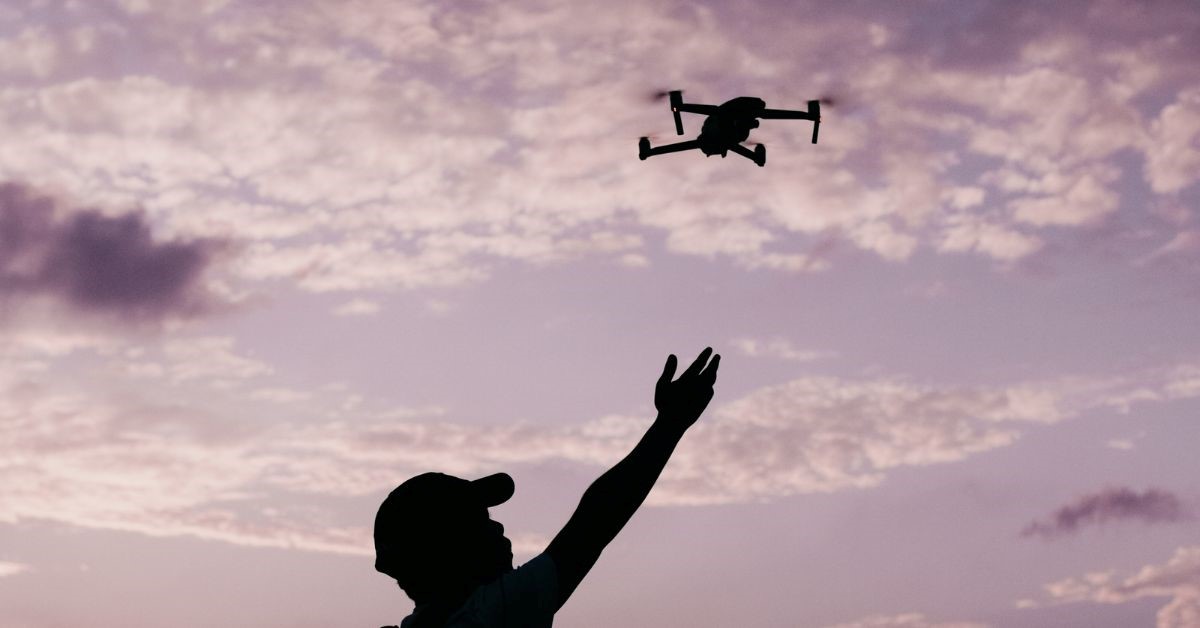Top 7 Benefits of Using Drones and Their Role in Agriculture

Military applications originally benefited from the development of drones. Initially, the military used them as remote-guided aerial missile launchers. Drones have many uses for civilian applications, including monitoring climate change, transporting goods, assisting search and rescue operations, and agriculture. In technical terms, a drone is an unmanned aircraft, a flying robot that users can control remotely using software-controlled flight plans in their embedded systems, in conjunction with onboard sensors and GPS. In layman’s terms, drones are aircraft that capture sight from a distance above the ground.
How Agriculture Utilizes Drone Technology
Drones, also called flying robots, are changing farming in amazing ways. These small machines fly high in the sky, taking pictures and collecting important information about fields. They can take simple photos or use special cameras to help farmers see how their crops are doing. Drones work faster than people and can even help in bad weather, making farming easier and better.
Farming in a way that protects nature is called sustainable agriculture. It means using less water, fertilizers, and pesticides while growing healthy crops. Sometimes, farmers use too many chemicals because of old rules or habits, which isn’t good for the land. Drones help fix this by showing exactly where farmers need to take action, saving resources and protecting the environment.
Drones help farmers check crop health, water the plants properly, and spray fertilizers or pesticides only where needed. They can also plant seeds and collect weather and soil information. This saves time and money while helping farmers grow more food in smarter and safer ways. With drones, farming becomes better for both people and the planet!
Top 7 Benefits of Using Drone
Spraying Applications for Crops
Since ancient times, spraying crops has been challenging and time-consuming for farmers and agricultural production companies. Crop spraying entails saturating vast land areas to ensure proper crop growth.
Crop spraying is not only a strenuous task but also necessitates the use of numerous hazardous chemicals that threaten human health after prolonged exposure. Drone technology is a significantly safer alternative incorporating ultrasonic, light detection, and grounding lasers, allowing farmers to spray crops five times faster than conventional crop spraying methods. With advanced topographical scanning, agricultural drones dispense the optimal amount of liquid to ensure uniform crop coverage and prevent waste. The future of drones in agriculture is prosperous and promising, indeed.
Plant Irrigation
Irrigation is essential to prevent crops from drying out and dying. Drones equipped with special sensors, like thermal and multispectral cameras, help farmers identify areas in the field that lack water. These sensors can measure heat levels, plant density, and overall crop health. By analyzing this data, drones provide farmers with a detailed view of their fields, showing exactly where irrigation is needed. This technology helps save water, ensures healthier crops, and improves farming efficiency
Crop monitoring
Farmers can use drones to monitor their fields from above. These flying machines take pictures that help farmers spot problems like dry areas, pests, or diseases. When bad weather makes it hard to inspect crops in person, drones make the job easier and safer.
With their precise cameras, drones allow farmers to check crops in a cost-effective way, without any risk. They can quickly identify areas that need attention or improvement, anytime, day or night. This constant availability makes drones a reliable tool for keeping crops healthy. Nowadays, it’s also easier to find advanced drones designed specifically for agriculture.
Crop Health
Checking the health of crops and fields is a key part of farming. It’s not just about spotting dried or dead plants, health assessments also check for fungal and bacterial issues in crops, trees, and fields.
Agricultural drones play a big role in this process. They use visible and infrared light to detect plants showing signs of disease or other problems. These drones provide real-time images of the fields, helping farmers take action quickly. This early detection prevents major crop losses and helps ensure healthy, successful harvests. Drones are becoming an essential tool for keeping farms productive and efficient.
Agricultural Planting
Planting crops has always been a time-consuming and expensive task done by people. However, modern drone technology has changed this. Drones can now handle planting tasks, reducing planting costs by up to 85%.
These drones perform various jobs like placing seeds into the soil, injecting seeds into pods, and helping plants grow efficiently. This not only saves time and money but also makes planting much easier for farmers. By using drones, farmers can focus on other important tasks while ensuring their crops are planted quickly and effectively.
Fields and Soil
Soil and field analysis is a key part of growing successful crops. These checks are important at every stage. Before planting, during growth, and before harvest.
Drones play a vital role in modern farming by giving real-time, 3D, and highly accurate measurements of important factors like:
- Soil health
- Planting patters
- Optimal irrigation and nitrogen needs
Drones are useful in many areas of agriculture. They can perform detailed scans to spot bacteria, fungi, and areas needing water or other care. This technology helps farmers make smarter decisions, ensuring healthier crops and better harvests.
Security
Drone technology is not just transforming agriculture but also revolutionizing farm security. Security drones are becoming an essential tool for managing farms more efficiently and safely. Drones can monitor remote parts of a farm without requiring farmers to physically visit those areas, saving time and allowing for more frequent checks. With their cameras, drones provide a daily overview of farm operations, ensuring everything is running smoothly and tracking equipment in use.
For high-value crops, drones can monitor fences and perimeters, reducing the need for extra security staff. They are also incredibly useful for protecting farm animals, as they can locate lost or injured livestock in hard-to-reach grazing areas. Tasks that used to take hours of walking can now be done in minutes with the help of drones. This combination of security and efficiency makes drones a powerful addition to farm management
Takeaway
Already, drone technology has drastically altered the agricultural industry, and drones in agriculture article will explain its influence will only increase in the coming years. While drones are becoming increasingly valuable for small farmers, there is still a long way to go before they are standard equipment for all farmers, particularly in developing nations.
In several nations, regulations governing drone usage need drafting and revision. Agriculture must research drones’ effectiveness in specific tasks, such as pesticide application and spraying. Before investing in this equipment, farmers need to comprehend drones’ limitations and functions.
Contact Us
Thank you for your message. It has been sent.
Latest Posts
Social Profiles















